Our 2019 Volkswagen Atlas Struggles to Be the VW of Big SUVs
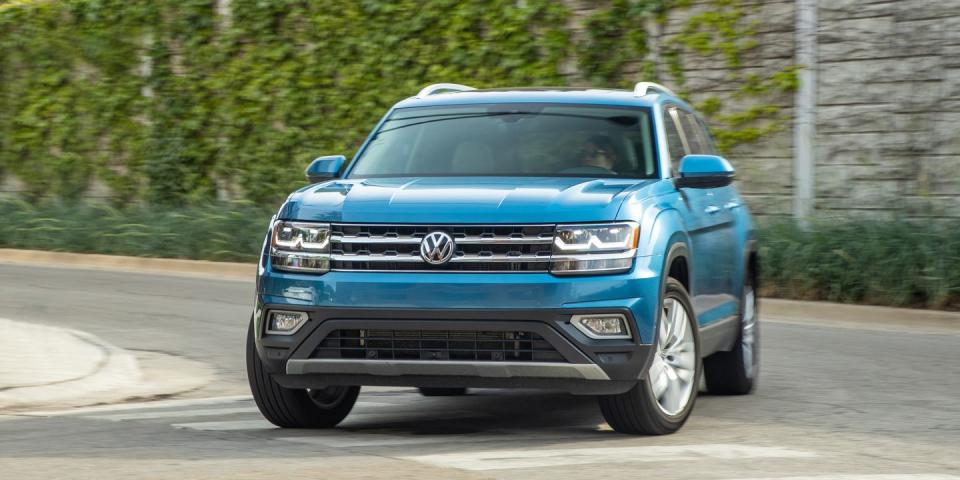
40,000-Mile Wrap-Up
Volkswagen is not looking like itself lately. Brand loyalists entering their local showrooms for the first time in a while will be surprised to see that VW no longer sells any new station wagons, TDI diesel models, or even Beetles on our shores. Instead, most new VWs sold in the United States are now SUVs, including the three-row Volkswagen Atlas that we drove for 40,000 miles.
Built in Tennessee and designed for American tastes, our long-term Atlas may not be characteristic of the Volkswagens we know and love. But it is hugely important for the brand, as it quickly became one of VW's top sellers upon its debut in 2018. Through the first half of 2020, the Atlas and the smaller Tiguan SUV made up 60 percent of VW's U.S. sales. To further this trend, the Atlas has been updated for 2021 with more attractive styling, and a two-row Atlas Cross Sport has also joined the lineup.

Our 2019 Atlas was a top-of-the-line SEL Premium model stickering for nearly $50K. Priced at $49,390, it was equipped with the optional 3.6-liter V-6 (a turbo 2.0-liter inline-four is standard) and 4Motion all-wheel drive. Since this is the Atlas's top trim level, which includes a digital gauge cluster, panoramic sunroof, heated and cooled front seats, and adaptive cruise control, we didn't add any options except for a $57 trailer hitch connector from the dealer. And why do you need the dealer to complete the final few inches of your vehicle's trailer wiring? Ask VW.
Throughout its history, Volkswagen has made various attempts at understanding U.S. car buyers, with mixed results. But it seems the company finally hit the nail on the head by making the Atlas simply big and boxy. The Atlas is huge even by three-row SUV standards, and we found many uses for its capacious interior over the course of our long-term test. Many of the positive comments in the Atlas's logbook centered on its ability to carry around people and stuff with ease. Smart packaging means both the second- and third-row seats can comfortably hold adult passengers, while the cargo area remains functional even with all the seats in use. Buyer's guide staff editor Eric Stafford called the Atlas's massive interior space its "defining characteristic," noted that the second- and third-row seats are easy to fold, and praised the flat cargo floor that makes it easy to slide in items such as coolers and folding chairs.
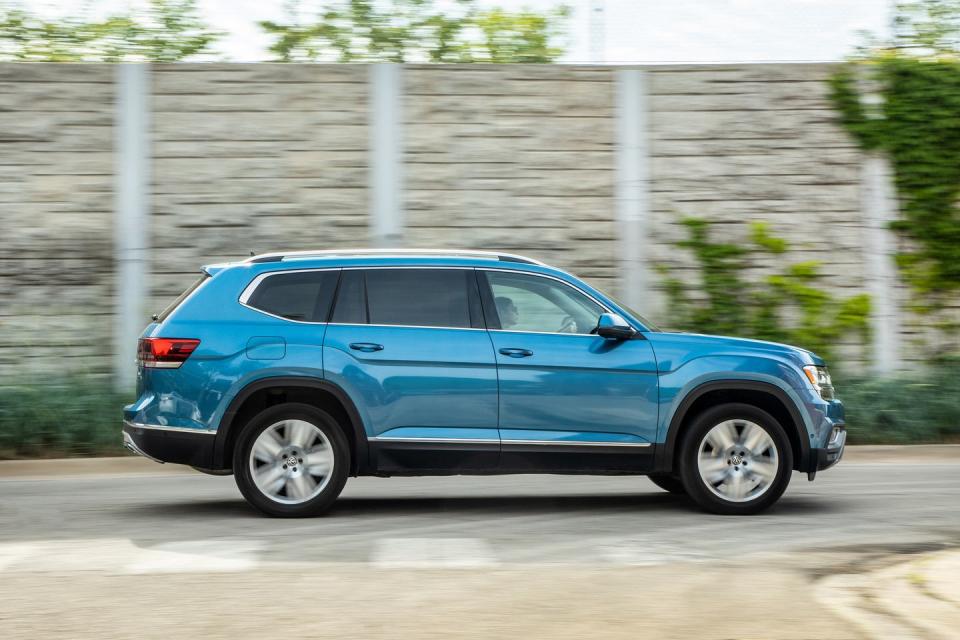
Space alone does not a pleasant interior make, however, and we weren't thrilled with the Atlas's materials or cabin isolation, especially for the price. Several drivers complained about the so-so fit and finish, cheap plastics, and annoying amount of wind noise at highway speeds. Newer competitors such as the Hyundai Palisade and 10Best-winning Kia Telluride are almost luxury-car-like in their refinement and plushness, making the Atlas feel a bit plebian in comparison. "Maybe at $32,000 I'd think it was acceptable," noted reviews editor Tony Quiroga. "But I can't believe anyone would buy this over a Telluride."
While none of us expected the Atlas to drive like a GTI, we would've liked for it to exhibit more Germanic driving character than it does. Director of vehicle testing Dave VanderWerp was one of many who complained about the ride and handling balance. "The 20-inch wheels clomp over lateral freeway seams, and yet the ride control over whoop-de-doos is nautical in its bounciness," VanderWerp said after taking it on a few road trips. "An odd and unfortunate combo." And the V-6 engine did not impress with its performance either, delivering a laggard 7.9-second zero-to-60-mph time when new that slowed to 8.1 seconds with 40,000 miles on the clock. Its fuel economy averaged 19 mpg, and that combined with the relatively small 18.6-gallon fuel capacity to make 400-mile fill-up intervals difficult to achieve on highway stints.

Perhaps the base turbo 2.0-liter inline-four, though less powerful, is a better choice for some buyers. Not only does it deliver better fuel economy, but a front-wheel-drive 2018 Atlas 2.0T we tested was also significantly quicker than the V-6. (It was admittedly a lighter, lower-trim model without AWD.) The main caveat is that the four is only rated to tow up to 2000 pounds while the V-6 can pull up to 5000 pounds.
The Atlas was a mostly reliable hauler, although we did take advantage of Volkswagen's generous six-year or 72,000 mile warranty on a few occasions. (The warranty coverage was reduced to four years or 50,000 miles for 2020.) At around 15,000 miles, the airbag light came on and was diagnosed as a few twisted and frayed wires. At 19,000 miles, the dealer replaced a leaking bevel box (a component of the all-wheel-drive system). At 30,000 miles the airbag light came on again, which necessitated a replacement passenger-seat cushion and occupant detection mat. And at just over 40,000 miles, the dealer fixed a worn spring clamp in the rearview mirror. Four scheduled service stops totaled $860, and replacing a cracked windshield added $820 to our tally.
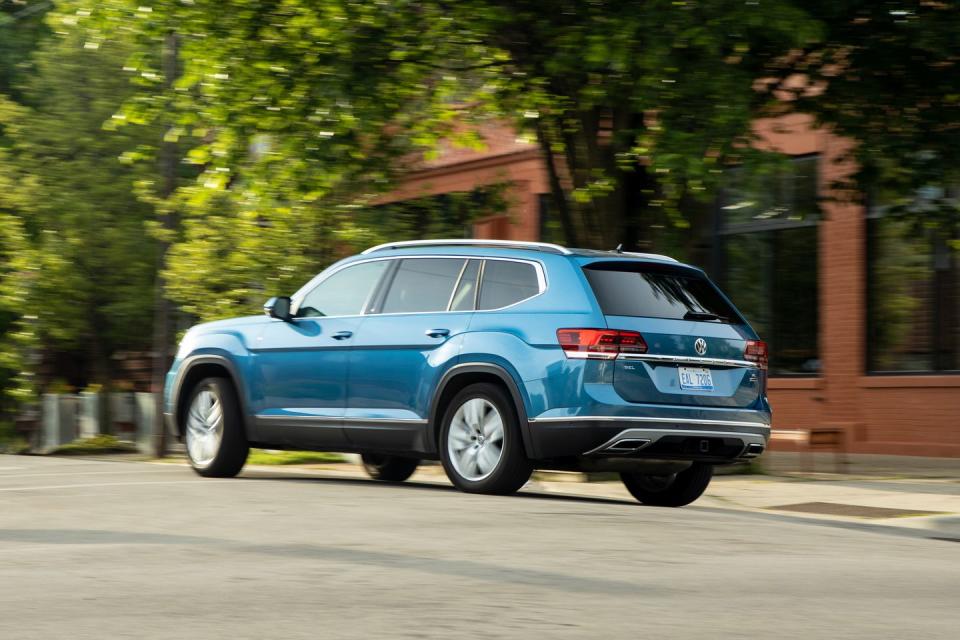
We don't take too much issue with the idea of the Atlas. From a business sense, VW is smart to compete in this segment, and it appears to have finally figured out what American buyers want. But after spending more than a year with this new type of VW, we can't help but be a bit disappointed on a philosophical level. If an enthusiast brand like Volkswagen is going to branch out into a new segment, we would've liked for the Atlas to be the true VW of huge SUVs. Mazda, for instance, does this brilliantly with the CX-9, which delivers the core attributes of Mazda's other products—lovely driving experience, overachieving interior—in a three-row package. The Atlas checks most of the right family-SUV boxes but fails to add any distinctive personality to the crowded three-row crossover space.
Months in Fleet: 17 months Current Mileage: 40,394 miles
Average Fuel Economy: 19 mpg
Fuel Tank Size: 18.6 gal Observed Fuel Range: 350 miles
Service: $860 Normal Wear: $0 Repair: $0
Damage and Destruction: $821
30,000-Mile Update
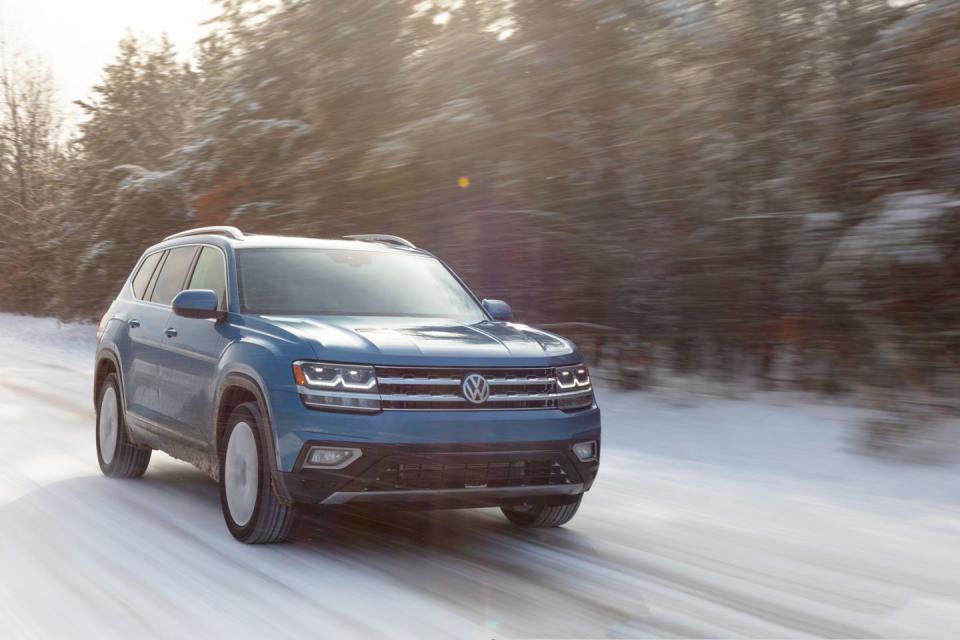
Sometimes it feels like we're piling on. When one of us starts complaining about a car, it's all too easy to join in. We summarized a few negative comments about our Volkswagen Atlas and its lack of Germanic driving verve in its last update. But not everyone has bought into the narrative that the Atlas is a disappointing vehicle.
Staff photographer Marc Urbano, who shuttled his family to Pittsburg in the Atlas during the December holiday season, was prepared to be underwhelmed by the three-row VW. But he found it to be a comfortable on the freeway, and said, "if you aren't going into it thinking it might be sporty the Atlas is just fine." Of course, "just fine" is not effusive praise, either.

Road test editor Becca Hackett also couldn't figure out why so many of us dislike the Atlas, although she did note a small annoyance with the windshield wipers in a snowstorm. Though the wipers are said to be "rain-sensing," they don't seem to do as good of a job sensing snow. Hackett noted frustratingly random wiper activity when in auto mode and had to assume manual control by repeatedly hitting the stalk to clear the white stuff off the windshield.
The Atlas is still riding on its splendid Yokohama winter tires, and staff editor Austin Irwin also encountered plenty of powder (pictured above) when he took the Atlas up to Oscoda, Michigan, to fish through a hole bored into a frozen lake. Technical editor David Beard also took the Atlas "Up North", but Beard's winter activities are a bit more active. On his way to a weekend of snowmobiling he complimented the supple highway ride while also complaining about the sluggishness and passing power of the 3.6-liter V-6 engine.
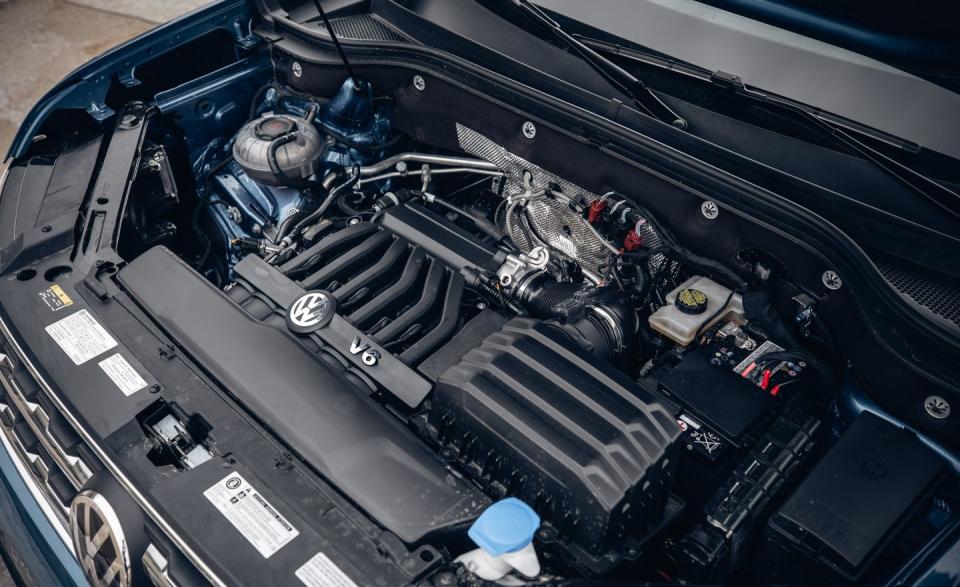
The Atlas's average fuel economy of 19 mpg hasn't budged in recent months, and it remains spot-on the EPA's combined fuel-economy estimate. We took it to the dealership for a 30,000-mile service, which included routine stuff such as an oil and filter change, a tire rotation, and various inspections for a total of $138.99. We had no quality complaints or any issues this term, but the technicians did perform a service action at no charge that involved removing the plugs for the sunroof drains and cleaning out the drains to prevent clogging.
Months in Fleet: 13 months Current Mileage: 30,534 miles
Average Fuel Economy: 19 mpg
Fuel Tank Size: 18.6 gal Observed Fuel Range: 350 miles
Service: $559 Normal Wear: $0 Repair: $0
Damage and Destruction: $821
20,000-Mile Update
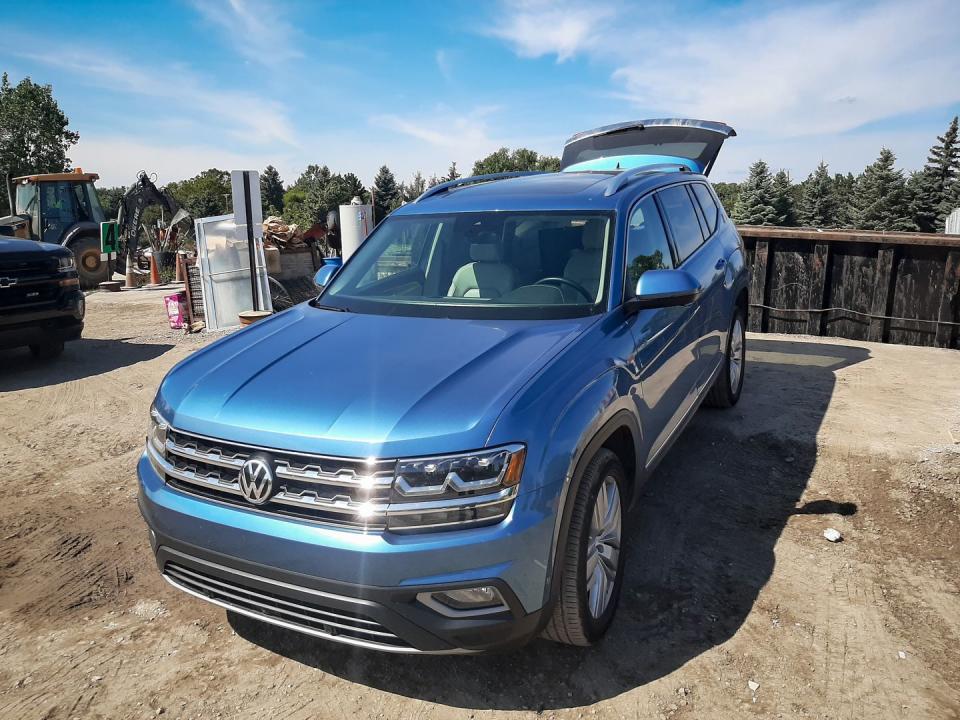
Roughly halfway through its 40,000-mile long-term test, our Volkswagen Atlas's standout characteristic is its size. Most comments in the logbook remark on the, uh, remarkable amount of interior space it provides for passengers and cargo. This is VW's biggest SUV ever, and largeness seems to be its sole reason for being.
But we might have hoped for a bit more spunk and driving character from the sole German entrant in the nonluxury three-row SUV segment, which is otherwise full of American, Japanese, and Korean competitors. "There's nothing German about how the Atlas acts or drives. It might as well be a Chevy," wrote deputy editor Tony Quiroga. No other logbook comments offered up any rebuttals.
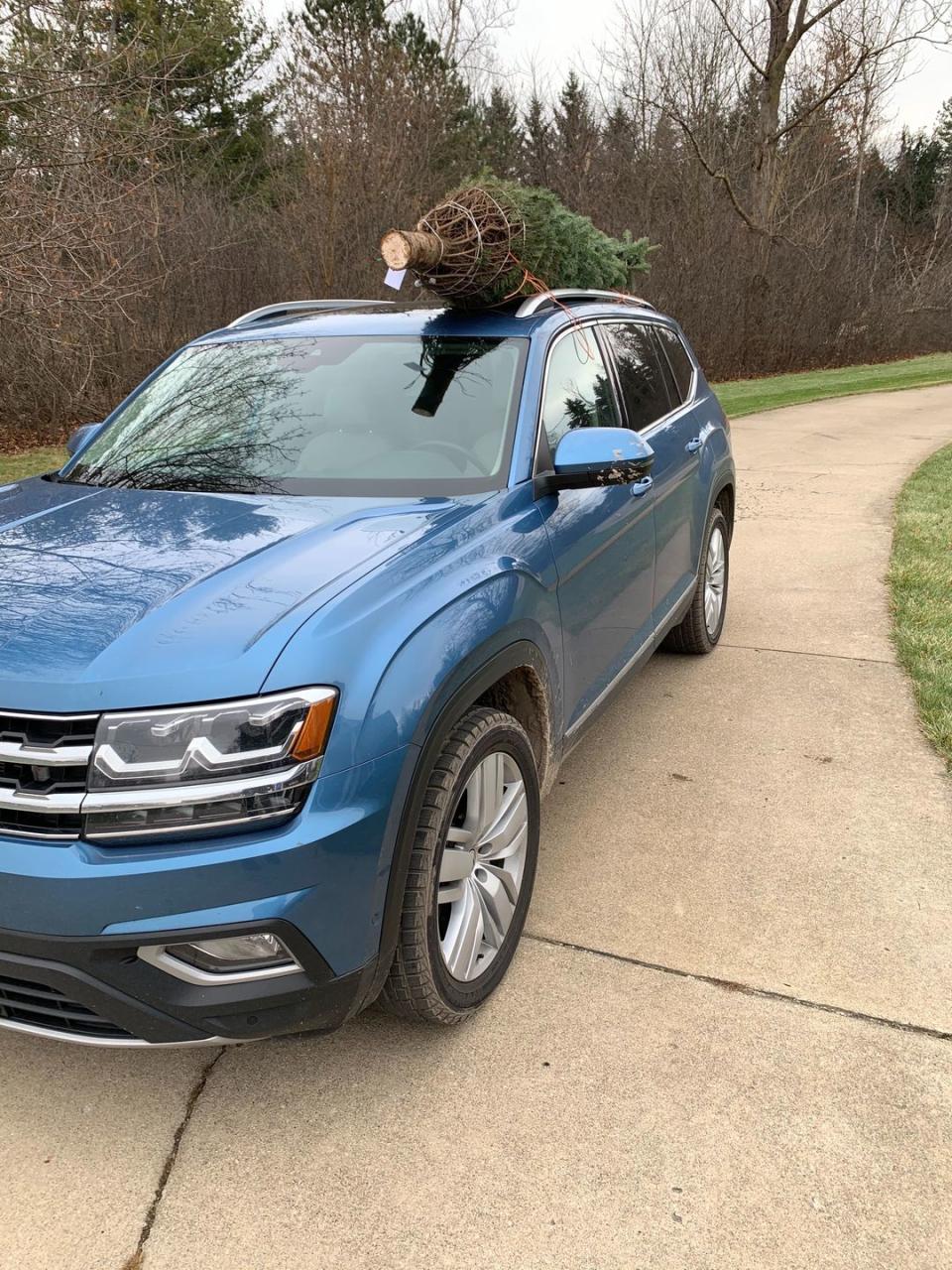

 Yahoo Autos
Yahoo Autos 